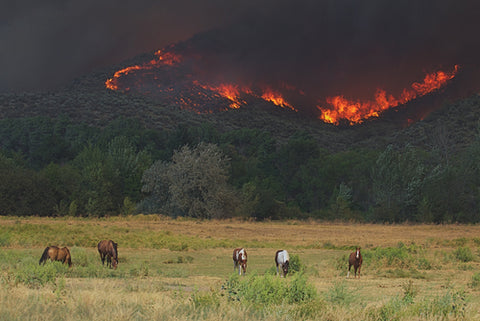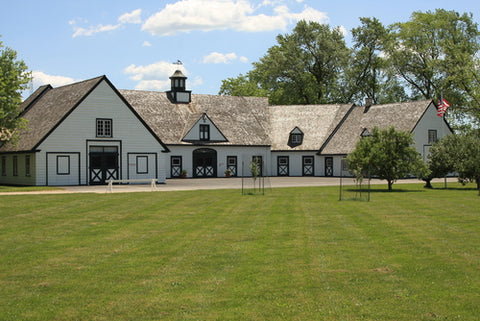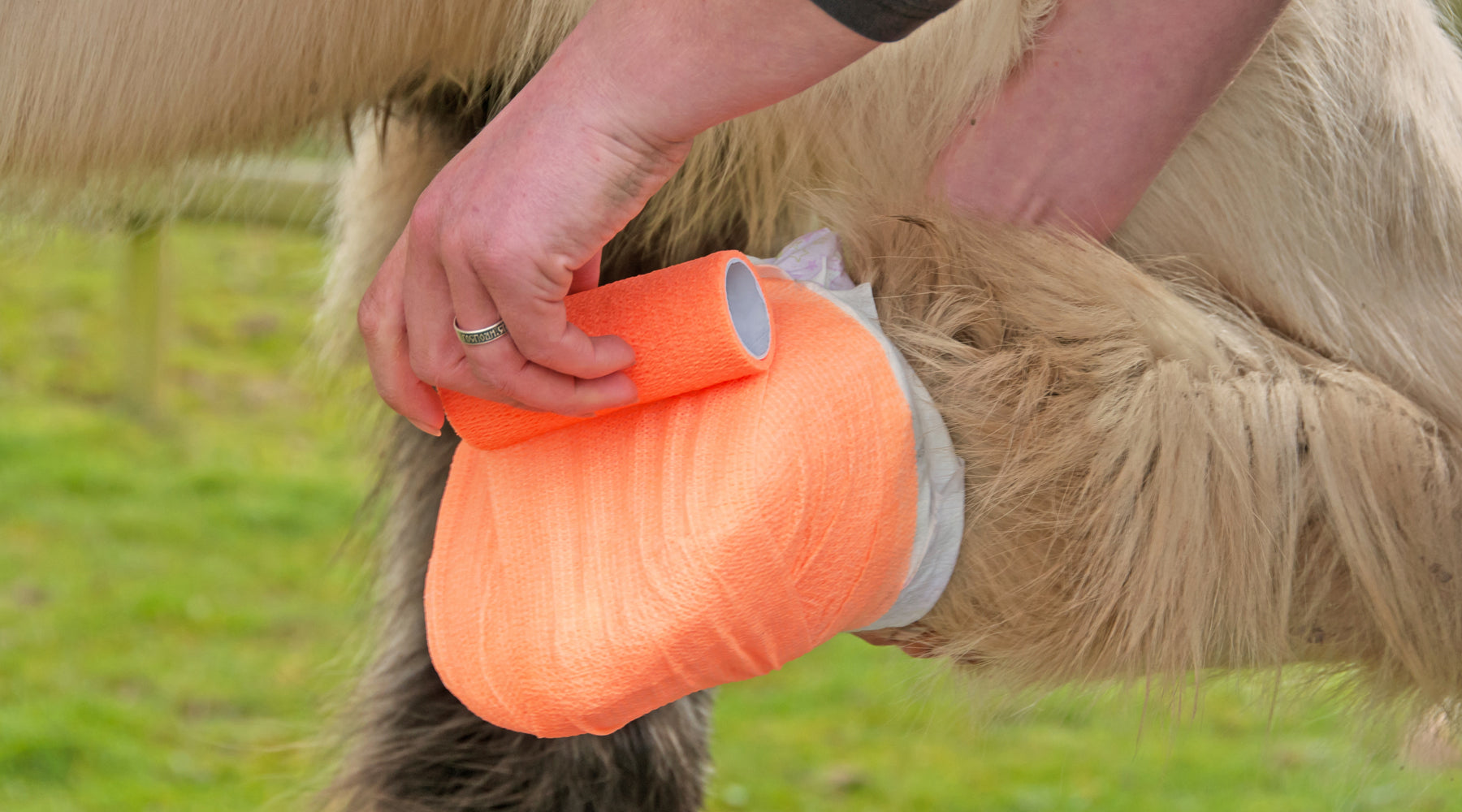Horse owners always cringe and twitch when they hear two things: “vet bills” and “emergency”. Unfortunately, both are not completely preventable, but there are methods and measures to take beforehand to avert these.
Emergencies are always a nightmare for horse owners, barn managers and stable hands. They pose many obstacles and can be a lot of work to rebuild and a full recovery for the horses, buildings and property.
Having an equine first aid kit and an emergency plan put in place before an emergency happens is one of the keys to an efficient and successful recovery.
A horse first aid kit should look very similar to a human’s. Think of the most common items you use around your barn for nicks and scratches as well as some more serious issues to stabilize conditions until the vet arrives.
Depending on the size of your barn and number of horses it houses, the container for the first aid kit could be a small backpack or large plastic tub(s) (however many you need).
What all should I include in my equine first aid kit?

An equine first aid kit should include, but is not limited to, the following:
- Rectal thermometer (digital)
- Petroleum jelly (for thermometer insertion)
- Latex gloves
- Duct Tape
- Self-adhesive bandages
- Scissors
- Cold pack (available in a variety of sizes)
- Clean bucket
- Iodine
- Saline Solution
- Rubbing alcohol
- Gauze
- No-bow wraps
- Standing wraps
- Bute
- Banamine
- Mild sedative
- A chart of resting TPR measurements for every horse (this is used for determining abnormalities for each unique horse)
There are many more items that can be added to this depending on your barn’s first aid protocol or what your vet recommends. Practicing with all of these items so you know how to efficiently and correctly utilize them on the day of the emergency is crucial!
Your vet will thank you!

In the event of a natural disaster or any other emergency that endangers the well-being of a horse, a separate kit may be assembled. Natural disasters can be heavily geographically based such as tornadoes (more common in the midwest), earthquakes (more common in the westernmost states) and hurricanes (most common in the southern coastal states).
Knowing the geography that surrounds your stable and land is crucial when planning a suitable retreat area in case of flooding, barn fire or dangerous intruder incident. Other emergencies such as a horse that is trapped in fencing, faulty fencing and/or stall doors etc. can also require some tools on hand.
Where do I begin with planning my emergency stable kit and protocol?
In the event of a natural disaster such as a fire, flooding, a horse stuck in a fence etc. a kit should include, but is not limited to, the following:
- A list of emergency contacts- trustworthy neighbors, emergency 911, boarders, owners, vet, barn manager, etc. and easily accessible to all who may need this information.
- Breakaway halters- No nylon as it will melt and cause burns in the event of a fire; have lead ropes already attached for quick access and at least a few more than there are horses.
- Chainsaw
- Wire cutters
- Buckets- for drinking water or dowsing small fires
- Fire extinguisher(s)
- Tags for horses that contain owner/barn contact information and basic info in case horses are left loose.
- Reserve a bale of hay per horse as well as extra feed rations to hold over until suitable replacements are established.
- Establish a messaging system for all owners/boarders/caretakers for quick and easy updates.
All of these should be easily accessible and the location should be known to all managers, employees and clients.
Things to consider to implement in your stable and riding areas:
- Sprinkler system- in case of fire
- Fire extinguishers- in case of fire
- Multiple exit points- accessible, close exits in case of a barn fire, flash flooding or intruder (see below)
- Drainage system- in case of flooding for removal of excessive water
Preventative measures to take to avoid disasters that could cause injuries or even death to horses or humans:

- Identify all fuel and flammable substance storage areas- keep these in a separate building away from the barn and high traffic areas such as the parking lot or riding areas
- Examine all incoming hay for high moisture and heat content- to prevent microbial heat that can lead to hay fires
- Install signs and enforce a strict no smoking or vaping policy
Being involved in an emergency can cause people to act illogically and quick. Make sure that you try to keep your cool as quick and brash decision making can result in even more dangerous situations. Practice runs of emergency protocol and making all employees and clients aware is crucial to keeping everyone and all horses safe as well as making a smooth road to recovery.
Prevention and prepare the keys to deal with disasters, no matter how big or little!


